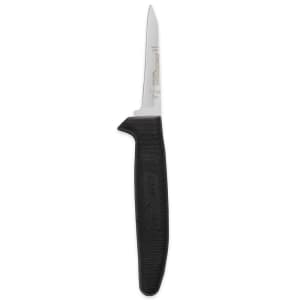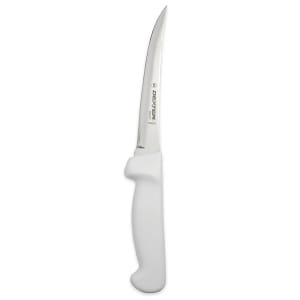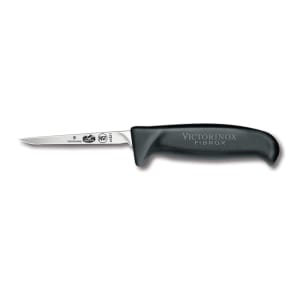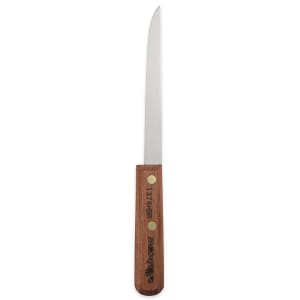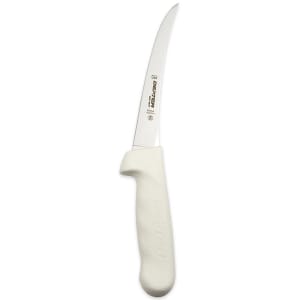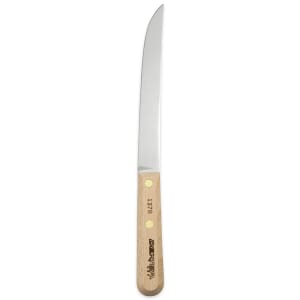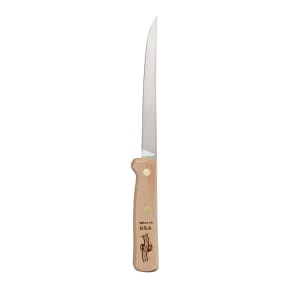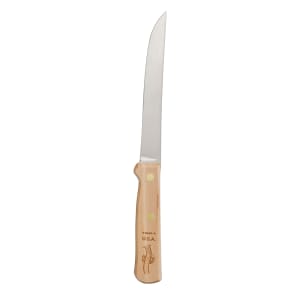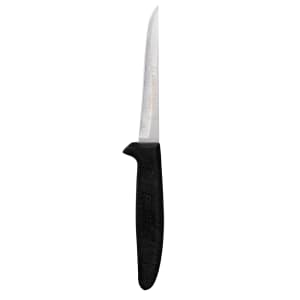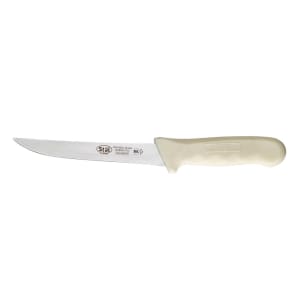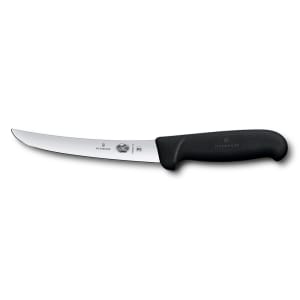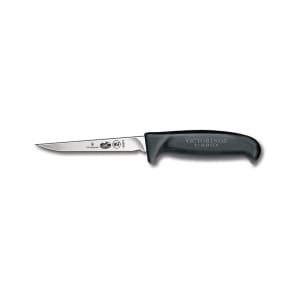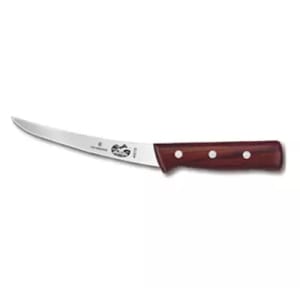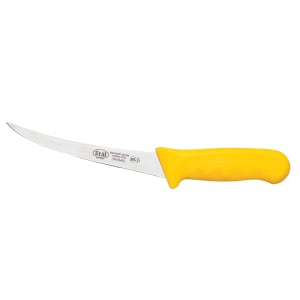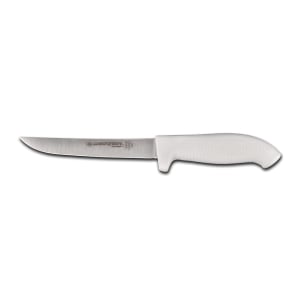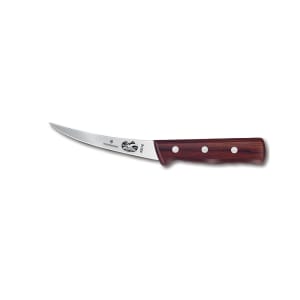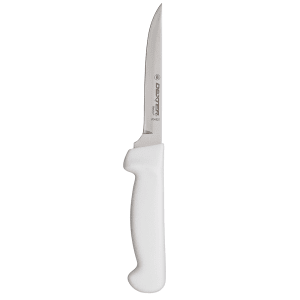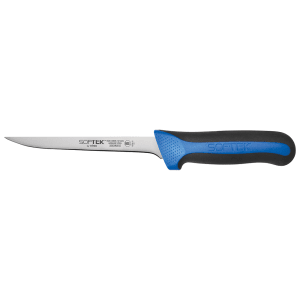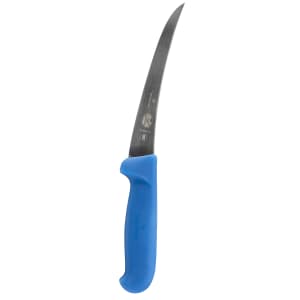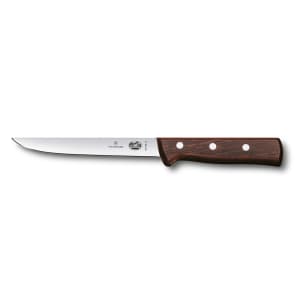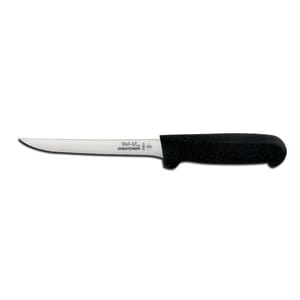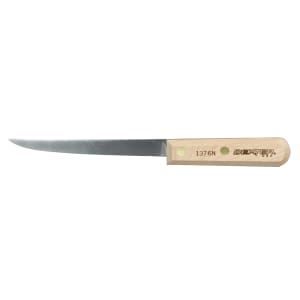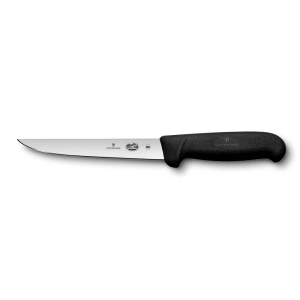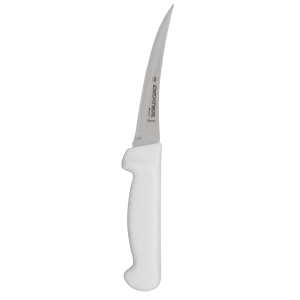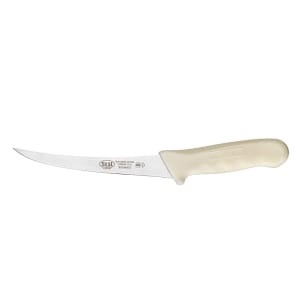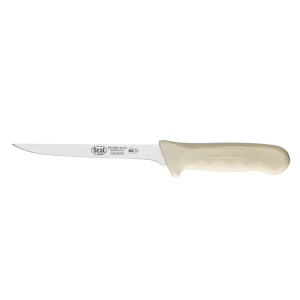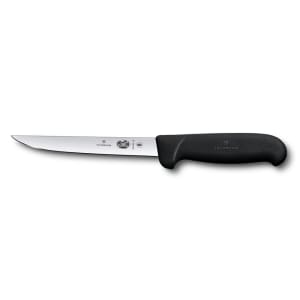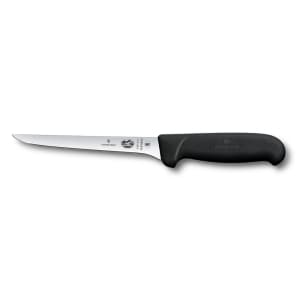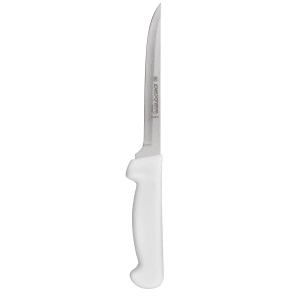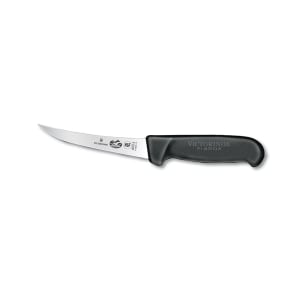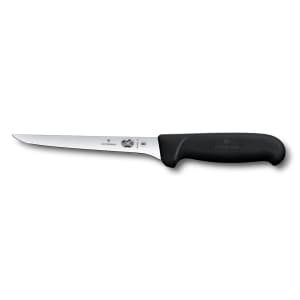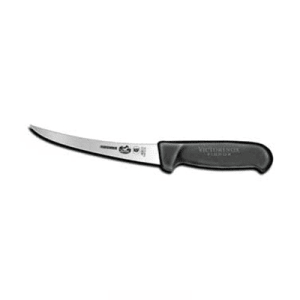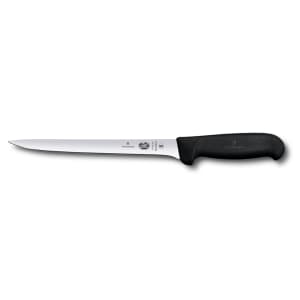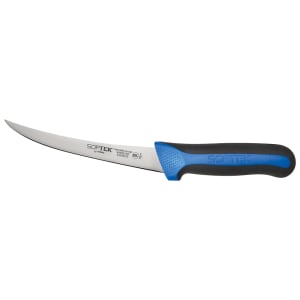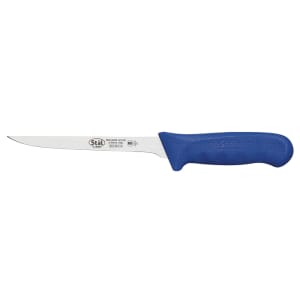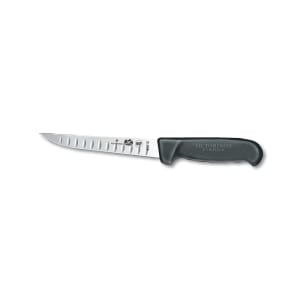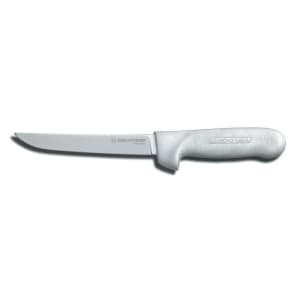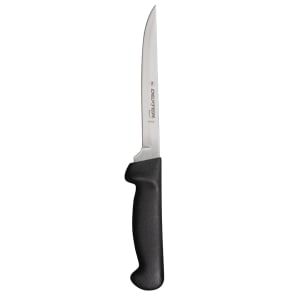Boning Knife
Whether you're cutting ribs, chicken, or beef, a wide variety of boning knife designs are available to suit your commercial kitchen's needs. More
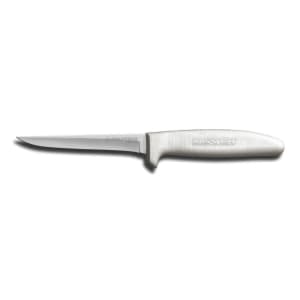
Commercial Boning Knives: What You Need to Know
Each boning knife design is optimized for cutting different forms of meat. These knives come in various styles, so it's important to invest in the commercial boning knife made for your operation's menu. Here are the five main types and the meats they should be used with:
- The curved boning knife provides users with the ideal working angle for cutting close to the bone.
- Stiff boning knives are designed for tough meats, such as beef and pork. They don't bend when force is applied throughout the cutting process.
- The flexible boning knife is best for filleting or skinning thin cuts of meat that can be pierced easily.
- Wide boning knives are suitable for chicken or pork.
- The narrow boning knife is best for cutting porkchops and ribs, providing precision when it comes to making cuts around bone or cartilage.
Straight knives are best for quick and easy cuts, while curved blades enhance precision. The stiffer the knife, the better it is for tough meats, but if you're looking for a middle ground between stiff and flexible blades, invest in a semi-stiff boning knife. Some designs, such as the ham boning knife, are more explicit with their intended use. For the most precise cut, the average boning knife size ranges from 3 to 8 inches.
Common Questions About Boning Knives
What's a boning knife good for?
Boning knives are ideal for cutting fish, meat, and poultry, as well as removing skin from fish and meat.
Are boning and fillet knives the same?
Fillet knives are often used to remove skin and bones from fish, while boning knives are best for removing bones from meat. However, the latter is also suitable for filleting. Although flexible boning knives are available, fillet knives are usually more flexible and thinner—a design that facilitates precise cuts required for delicate meats. Because boning knives are sturdier and thicker than fillet knives, they're better suited for tough meats such as beef, chicken, and pork.
Should a boning knife be flexible?
The flexibility required of your boning knife depends on what you'll be using it to cut. Stiff boning knives are optimal for tough, thick meats because they don't easily bend. Tougher meats require more force during the boning process, and if your knife is too flexible, injuries may occur. Flexible boning knives are made for thin cuts of meat that can be pierced easily and are more intricate to bone. This design is ideal for removing bones from chicken and salmon.
What's the difference between forged and stamped boning knives?
The forged commercial boning knife is thicker and heavier than stamped models. For balance, these units' bolsters add weight to the knife. The bolster in this boning knife configuration can protect fingers during use because it provides a stop between the handle and the blade. Providing a thinner overall design, the stamped boning knife doesn't have bolsters. Because they lack a bolster, these units boast a comfortable grip and are often more flexible than the forged commercial boning knife. The added weight of forged units can increase fatigue over time, while the stamped boning knife is more prone to breakage and corrosion.
What's the best material for commercial boning knife handles?
Boning knives are available with handles made of three popular materials:
- Nylon handles are the strongest and most impact resistant handle option. This commercial boning knife handle is chemically inert and can tolerate exposure to high temperatures. These characteristics are reinforced when glass fibers are added during manufacturing.
- A boning knife with a plastic handle is comfortable and more economical than alternative materials. Because these come in various colors, they enable color-coding applications for HACCP compliance and help inhibit cross contamination.
- Wood handles are the preferred choice of many foodservice professionals, though this material can be more high-maintenance than other types. Although a classic knife handle option, they likely won't last as long as other materials and are more challenging to clean. Wooden handles are susceptible to issues such as rotting and splintering because wood is a natural material. These boning knives aren't dishwasher safe, and they should never be soaked or exposed to direct sunlight for extended periods. Some wooden boning knives also have to be oiled frequently, so check the manufacturer's instructions for recommendations on optimal care and maintenance.
How often should you clean a boning knife?
Boning knives should be cleaned after each use. Using a gentle brush or soft cloth, these units must be washed with warm, soapy water and then wiped dry with a towel to remove all debris.

